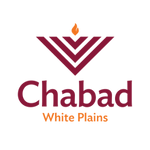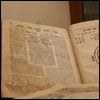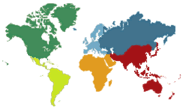On Shabbat, April 22 (1 Iyar), Jews around the world will conclude the daily study of Maimonides’ magnum opus, Mishneh Torah, also known as Yad HaChazakah or simply, Rambam—the Hebrew acronym for Rabbi Moshe ben Maimon. Siyum (“conclusion”) events will be held around the world on the day of the completion and on the start of the new cycle the following day, with major celebrations also to take place two weeks later on Lag BaOmer, which this year falls on the evening of Monday, May 8 and Tuesday, May 9.
The study program was launched by the Rebbe—Rabbi Menachem M. Schneerson, of righteous memory—in 1984. Recognizing that not everyone has the ability to study three chapters a day in time to complete the 14 books of Mishneh Torah in one year, the Rebbe created two additional parallel tracks: one that completes the study in three years by learning one chapter a day and another that goes through Maimonides’ compilation of Sefer HaMitzvot (“Book of Commandments”) over the period of a year.
This year marks a “triple celebration” that includes those who learned three chapters per day, those who learned one chapter a day, and those who follow the daily learning cycle of Sefer HaMitzvot, all simultaneously completing their study cycles.
Events will take place in cities around the world, like Tiberias in northern Israel, where the siyum will be held at the tomb of the Rambam. On Sunday, April 23, Chabad-Lubavitch of Wisconsin will host a siyum and celebration of Jewish unity and Torah study in this year of Hakhel. The event will be dedicated to the legacy of Henya Federman, a native of Milwaukee who devoted her life to locals and visitors to the Virgin Islands. In Morocco, Chabad will lead a group from Casablanca to the Rambam’s home in Fez, where they will celebrate the study of Mishneh Torah and pay homage to a Torah sage who lived briefly in their home country.

Two weeks later, a grand completion ceremony will take place outside Chabad-Lubavitch World Headquarters in Brooklyn, N.Y.
There, as well as at children’s Lag BaOmer parades and celebrations throughout the world, children will celebrate studying the final mitzvah of the Sefer HaMitzvot and together begin the opening words for the next year’s cycle.
It’s no coincidence that thousands of Jews will celebrate the study of Rambam on the day of Lag BaOmer. At face value, Maimonides and Rabbi Shimon bar Yochai (“Rashbi”)—whose anniversary of passing is commemorated on Lag BaOmer—each represent different parts of Torah. Rambam is a compendium on the entirety of Jewish law, while Rashbi’s work, Zohar, is the foundational text of Jewish mysticism, the esoteric part of Torah.
In a 1985 Lag BaOmer address, the Rebbe explained that, in fact, Rambam’s Mishneh Torah begins with the basic commandment to “know that there is a First Being,” and at the end of his work, he concludes: “… they will know the things that are now concealed ... and will attain an understanding of their Creator to the utmost capacity of the human mind.”
However, continued the Rebbe, the entire work of Jewish law that lies between these two more esoteric lines isn’t another subject dealing with the practical, down-to-earth rules and regulations that govern Jewish life, but the practical expression of “knowing G‑d.” Knowledge of G‑d, taught the Rebbe, “… reaches maturity only after learning through Mishneh Torah. Then, at the conclusion, you truly come to know G‑d!”
There is no separation between the esoteric parts of Torah and the practical application of the Torah’s laws, the Rebbe continued, for “… they unite, for ‘the ‘word of the L‑rd’ means Halachah’ which unites all aspects of the Rambam. For the Halachah reveals the word of G‑d and the will of G‑d, and thus the knowledge of G‑d is revealed.”
To find a Siyum HaRambam near you, search the Chabad Locator here.
Comprehensive resources for the daily study of Rambam can be found on Chabad.org here.








Join the Discussion